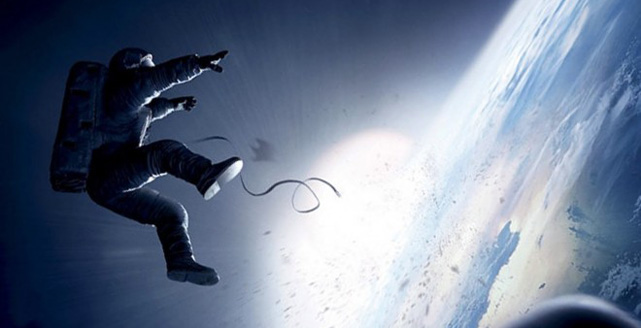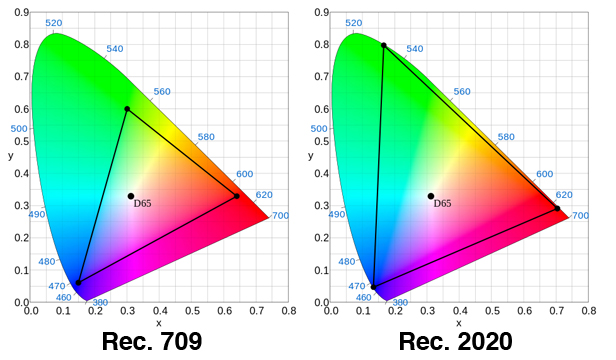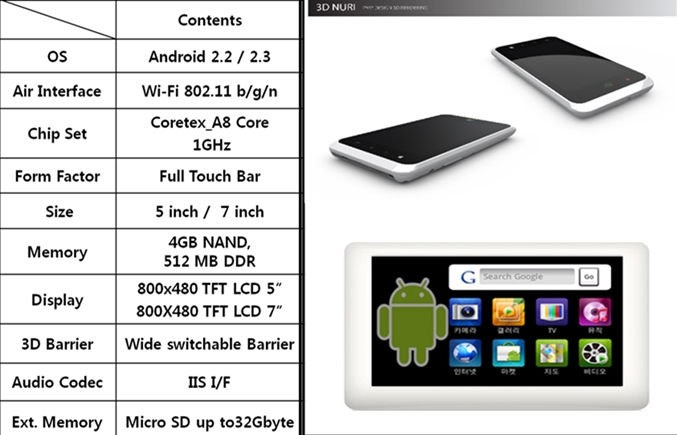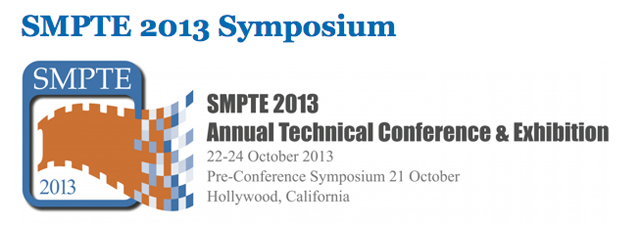October 22, 2013
Stereo 3D News Roundup :: Regarding the concern over 3D, and birth of UltraHD
Written by Denise Quesnel
There has been a tremendous array of news the past month regarding the ‘demise’ of 3D, and the surge of UltraHD (4K, 8K) interest.
There are several opinions one can take, and here at the S3D Centre we know one thing- 3D isn’t going anywhere, and it is currently in limbo. With 3D capability on TVs now no longer a premium cost, we can be encouraged that 3DTVs and other 3D devices are now accessible at a fair price point to consumers. We also know that UltraHD televisions are currently extremely expensive for 99% of consumers, and the medium will be years off from seeing realistic uptake. There is truth that it is simple to create and deliver 4K and beyond content for broadcast, online or cinema. Similarly, 3D content is also becoming more reasonable to create and deliver. Many 3D ‘experts’ are blaming several factors for the consumer disinterest in 3D: glasses, viewing angles, and lack of content. Other experts claim that without impelling 3D content, consumers simply will not love 3D and this is the fault of the broadcaster for not understanding the medium and its marketability.
Unlike in many parts of Europe (where 3D is driven by broadcasters and creative professionals alike) North America’s 3D topics has largely been handled by 3DTV and camera manufacturers who are trying to sell products, and not by broadcasters and content creators who determine unique content.
While this controversy is going on, it is important to note that cinemas just had their most exciting Spring/Blockbuster year ever. Movies such as The Great Gatsby, Iron Man 3, Jurassic Park, Star Trek: Into Darkness, Man of Steel, Pacific Rim, The Wolverine, World War Z, Despicable Me II, and Monsters University were launched with as many having created in native 3D as converted 3D.
And with Gravity, The Little Mermaid, 47 Ronin, and The Hobbit: The Desolation of Smaug (also in High Frame rate) set to come out in the fall/winter months, we see only more experimentation, learning, and creativity on the horizon.
Here is a breakdown of all the most relevant articles we could gather on the topic of UltraHD, 4K, 8K., HFR, 3D and more.
Skip to: HIGHLIGHTS | 3DTV & BROADCASTING | EMERGING MARKETS | RELEASES & EVENTS
—
HIGHLIGHTS
SMPTE Newswatch: State of 4K Ultra HD
From SMPTE: “Michael Grotticelli recently posted some interesting coverage about the state of the push toward widely implementing 4K Ultra High Definition (UHD) on the Broadcast Engineering website. Inthe article, he summarizes the Consumer Electronics Association’s (CEA) newest report on the topic, dubbed “Ultra High Definition: State of the Industry.” Grotticelli suggests there is a gradually emerging market developing for 4K broadcast content designed for home viewing. He reminds readers that various technology companies are hard at work researching what he calls “next-generation compression and decompression chips” built around the HEVC codec for eventual implementation in 4K home viewing monitors.
Additionally, “the CEA report cites the upscaling of high-definition resolution content and a trend toward more affordable pricing as two of the most important factors affecting the 4K market in these early days,” Grotticelli writes. “Ultra HD displays can upscale HD video to Ultra HD resolution using video processing to fill in the extra resolution.” Grotticelli also posted a second article that suggests the current broadcast industry infrastructure’s limitations remains “the biggest hurdle to Ultra HD distribution.” That article discusses the promise of HEVC, other developments, and interesting recent tests, but points out those developments are still a long way away from being implemented.”
—
Variety: 3D Dead? Don’t Count It Out Just Yet (Format has plateaued and will be stuck at this level until the technology improves)
“The recent announcement that ESPN is shuttering its 3D sports network has triggered another round of “3D is dead” articles. But 3D isn’t dead. I do think, though, it has plateaued and is going to be stuck at about this level until the technology improves.
Steve Schklair of 3D tech supplier 3ality admitted pangs of doubt after the ESPN announcement. “3D television in the U.S., for many reasons, is just not going to happen in the current climate,” he said. “The audience is not being built.” But Schklair notes that BSkyB’s 3D TV service in the U.K. is doing well. “It succeeds in the U.K. because of the quality and the non-repetitiveness of their offerings,” he says. Pace also observes that in England, the major driver behind 3D has been a broadcaster promoting shows in the format, not manufacturers trying to sell TVs.
(Vince) Pace says the next window of opportunity for 3D will come with the arrival of 4K Ultra-High-Def TV. Creatively, he says, 3D and UHD match up well: Both benefit from wider camera angles and less camera movement than today’s HDTV.”
—

Dr. Ryan Stone (Sandra Bullock) hurtles into space in Gravity. Image: Warner Bros
Wired Magazine : What Gravity’s Box Office Triumph Means for the Future of 3-D Film
From the article: “Not only did [Cuarón] want to ensure that the 3D was an integrated and value-added aspect to his film, he decided at the beginning to make it so. This approach allowed 3D to be a supporting element and enabler of the outstanding story. And what’s great is [that] audiences are validating that decision.”
In its opening weekend, 80 percent of all Gravity ticket-buyers chose to see the film in 3D (compare that to 71 percent of Avatar’s opening audience). The following weekend, that number rose to 82 percent and remained steady through the third weekend. Despite its continued description as “game-changer,” at the end of the day can Gravity — or any other movie that successfully utilizes 3D as a tool for immersive storytelling for that matter — truly change the course of which films studios deem worth of being given the 3D treatment? Will Gravity’s success inspire a rash of pictures that look at 3D as a meaningful way to enhance the storytelling, and not just the studio’s bottom line?
—
3D Focus: Ultra-HD may need beyond 120fps says BBC Chief Technologist
“In a short interview with 3D Focus, Chief Technologist HD & 3D, BBC Technology, explains why higher resolution ultra-HD broadcasting will require dramatically increased frame rates, even beyond 120fps.
3D Focus: What are your thoughts about shooting in multiple frame rates like Showscan Digital or showing certain scenes in HFR like when movies show certain scenes in IMAX?
Andy Quested: Would not work on TV – it takes time for displays and receivers to change (5 -6 seconds) and that assumes we can do it at the broadcast end. But I assume you mean the projector runs at the same speed all the time but plays frames at different repeat rates?
That would work for non-live but for live you would have to run the chain at the same speed and there is no saving for repeated frames. Also we can use Long GoP so the higher the frame rate the more efficient. At the moment production GoPs are around 12-15 (but we could go to 20- 22) based on a 25fps system. If we were to run at 120fps we could run a GoP of over 100-110 and at 300fps around 280-290.”
—
No Film School: The Best Thing About 4K & UHD Isn’t More Resolution: Sayonara Interlacing, Hello Wider Color Gamut
The author makes some significant points about the age of progressive films rates, the demise of interlacing, and the advantages to wider colour spaces.
“As some have speculated, the recent push for 4K/UHD may have as much to do with hype as it does with quality. And, as has been stated time and time again: you may not get a huge benefit from 4K in your home, depending on viewing distance and screen size. There are some other factors, however, that make ‘Ultra HD’ technology desirable, regardless of clarity so crisp you can’t even tell how crisp it really is. These factors are the other important goals defined in the ITU-R’s (aptly dubbed) Rec. 2020 spec for 4K/UHD. Namely, they are (larger) color space and (progressive-only) frame rate.”
“Also note support for 120 Hz imaging… in a sense, Doug Trumbull foresaw the benefits of a 120-based future with his digital Showscan technology. The good thing about 120 is that pretty much everything divides into that rate evenly — 30, 60, and yes, 24. This is partially already in play with 120 Hz sets, but media actually delivered in 120 (for whatever reason) means the sets wouldn’t have to perform that great ‘motion smoothing’ trick they do.”

Images by Sakurambo & GrandDrake. If you want the wavelengths in nanometers, check out the InformationDisplay.org or Wikipedia pages on Rec. 2020.
—
The Verge: James Cameron on 3D: Hollywood’s doing it wrong
“Cameron noted that while he hoped “to get as many people shooting in 3D as possible” with the release of Avatar, the production of 3D movies has “become a studio-driven top down process to make money,” and that control is often taken out of directors’ hands as 3D effects are added in post production.
While Cameron doesn’t want to stop making 3D movies, he appears to be calling for studios to fully commit to the craft and not tack on the experience as an afterthought.”
—
Variety : Experts See Fuzzy Future for Ultra-HD TV
“Ultra-High-Definition 4K television is poised to be the next standard, the TV that will dominate the living room of the mid-21st century.
But to hear the technologists assembled for the Society of Motion Picture and Television Engineeers’ day-long symposium on UHD TV tell it, Ultra-TV will tread a hard and thorny path on its way to wide adoption.”
“Ultra-HD is often called “4K TV” but as the SMPTE panels explored, it’s really far more. It is to include improved color standards; wider dynamic range (brighter highlights and darker shadows); and higher frame rates. The clarity and vibrancy of a UHD picture is startling even compared with a full HD 1080p image.”
—
3DTV and BROADCASTING
Broadcast Engineering : Existing infrastructure biggest hurdle to Ultra HD distribution

image courtesy of Broadcast Engineering : OdeMax is a new Internet download service offering 4K movies over the Internet. New types of compression are needed to free up bandwidth to make it practical.
From the article: “Clearly, the closed test is not representative of the “real world,” and 4K’s bandwidth-hungry file sizes — basically four times the pixels of standard 1080p HD — make it tough to use the existing distribution infrastructure (whether over the air, via cable/satellite/Telco, Blu-Ray disc or even the Internet). Can it be done technically? Sure. Is it practical? Far from it. The answer, many agree, is a better form of video compression than the H.264 standard that is widely available today.”
—
NBC News: Ultra high-def TVs get ultra price cuts nine months after debut
From NBC:
“Here’s the real behind-the-scenes story: The cost of manufacturing an ultra high-def TV isn’t anywhere close to the prices that TV makers are currently charging. Along with premium pricing and a lack of available content, the required transmission standards for ultra high-def TV aren’t yet in place.
Also, the current-generation digital interface found on new ultra high-definition TVs, called HDMI 1.4b, can’t handle signals in the 60 frames-per-second rate used by existing HDTVs. (The next generation of HDMI chips that would make this possible are expected to arrive in early 2014.) And even if you get to see a movie in the ultra high-def format, you’ll need to sit much closer to the screen than the typical 9- to 10-foot viewing distance in order to see all the added detail.” Continue reading
—
Sports Video Group : SMPTE 2013: HEVC, Ultra HD Step Into Spotlight
The next-generation HEVC compression format, for example, stepped to the fore as a means to deliver new TV services featuring higher resolution, more frames per second, and expanded color accuracy in bandwidth levels that would have been beyond comprehension five years ago.
“HEVC is the key to deliver an enhanced viewing experience that is beyond HD,” said Sophie Percheron, product marketing manager for live distribution, ATEME, during her presentation. “First is more resolution, but ‘beyond HD’ must not only be defined by resolution. Increased frame rates and wider color gamut can increase the color space to 60%, giving more accuracy to the image and higher dynamic range.”
Percheron laid out the case for HEVC with respect to new TV services, explaining that it will allow Ultra HD (UHDTV) 4K services to be delivered between 11 and 18 Mbps, putting it in line with the requirement to deliver HD via MPEG-2 in 2005.
And, for those looking to move from 60 to 120 fps, she offered even more good news: as the frame rate increases, the percentage of additional bandwidth required decreases. For example, going from 25/30 to 50/60 frames per second requires between 19% and 42% additional bandwidth. But going from 60 to 120 frames per second requires only an additional 17%-28% of bandwidth.
“You can deliver up to four channels of Ultra HD per transponder with HEVC at bit rates that are comparable to HD services today,” she added.
—
Broadcast Engineering: 4K doesn’t feel like 3DTV
“The difference between 3DTV and 4K here is obvious as the screen you view it on. The only impediment is cost. If you can afford a 4K TV, and the prices are quickly coming down, I believe there’s potential. Last year Sony was saying 4K TVs would cost about $15,000. This year the company showed a 55-inch model for under $6,000 and a 65-inch TV for $8,000.”
“It will still take many years before we see it in our living rooms in any real numbers, but for me, 4K does not feel like 3DTV—8K does, in terms of immersive picture quality—and that’s foreshadows a higher resolution future for everyone.”
—
Broadcast Engineering: For 3DTV, The Next Shoe Has Dropped
“ESPN 3D launched in 2010 with coverage of 25 FIFA World Cup matches, but word that the channel will be shut down by the end of the year has the international football association reviewing whether it will use the technology at all in 2014.”
“The Associated Press reported that FIFA has sent questionnaires to rights holders to assess their interest in 3-D coverage. Overseas broadcasters in Europe continue to (at least publically) favor 3-D content in some form or another.”
—
Broadband TV News: Sky captures first-ever live UK event to be broadcast in Ultra HD
“All the content was directed live, produced and edited by Sky’s in-house football production and broadcast operations teams using four Sony F55 UHD cameras complemented by two UHD EVS servers for replay, and graphics. The production was done from a purpose built outside broadcast truck in conjunction with Sony and Telegenic in line with current live HD broadcast techniques.
Four synchronous full HD feeds were run by Ericsson over a Eutelsat transponder to its London HQ and was shown on a Sony 84 inch Ultra HD TV at its headquarters in Isleworth. While such a set would currently set you back £25,000, a 55 inch model is available in stores for £3,999.
Sky is emphasising that the event was not a product launch, but merely a demonstration to develop the broadcast requirements to meet any future demand for Ultra HD.”
—
Sports Video Group: ESPN’s Skipper Details New Digital Center; 3D Future Depends on Fan Demand
“ESPN last week made headlines when it announced that its 3D network will cease operations at the end of the year, but ESPN President John Skipper told attendees at the B&C Sports Business & Technology Summit that, if consumer demand for 3D got to a high enough level, ESPN would get back into the 3D game.”
“Skipper also gave attendees a sneak peek at ESPN’s new digital center, which is currently under construction and slated to open early next year. The complete facility will measure 190,000 sq. ft., and a visual fly-through of the studio space showed a massive facility with a large central open space ringed with stages, giving new options for camera movement, dynamically cutting between stages, and more. It also allows for more rehearsing, as a goal is to do more storytelling. ”
—
Cable.co.uk : Sky 3D now received by 500,000 homes
“Sky has reported its most successful quarter of 3D growth to date, with more than half a million households now signed up to receive three-dimensional content from the satellite broadcaster.
The positive result is in stark contrast to the trend seen across the TV industry. In the US, sports broadcaster ESPN will call time on 3D content production by the end of 2013, while the BBC recently announced a three-year hiatus for the development of 3D programming.
John Cassy, Director of Sky 3D, accepted that the 3D TV market “isn’t quite where some people had hoped it would be by now”, with Sky itself experiencing numerous challenges on the way to reaching the milestone of 500,000 viewers.”
—
Screen Daily : Sky confirms 3D commitment
“BSkyB has reaffirmed its commitment to 3D programming, with a focus on big events, despite broadcasters such as the BBC turning their back on the technology.
“We recognise that at this stage in its development 3D isn’t for everyday viewing, like on a standard TV channel. This is why we continue to believe it is about focusing on big events where the technology really benefits viewers,” said Cassy.”
“This is because – unlike some other providers of 3D programming in the UK or US – we are a platform operator as well as a content producer. This means that a significant proportion of the value of providing great TV in 3D lies in how it helps attract new customers to join Sky, and provide another reason for existing customers to stay with Sky,” he added.”
—
EMERGING MARKETS
TVB Europe: Glasses-free 3D airborne by year end
“A glasses-free 3D display technology will be installed on planes by several major airlines by the end of the year, according to its European distributor, Frontniche.
The autostereoscopic technology, devised by Korean manufacturer 3D Nuri and unveiled earlier this year, is currently available on a £250 5-inch Android tablet. The patented technology uses a parallax barrier technique placed in front of the LCD allowing each eye to see a different set of pixels. It also includes a 2D video to 3D convertor.”

—
423 Digital: Nokia and Intel conclude 3 year project examining future of ’3D Internet’ | The Next Web
“From the business perspective, the 3D Internet space is a huge opportunity and we are seeing more and more businesses and research being built around 3D Internet. The Oulu area has unique expertise and provides a living lab environment to test and develop 3D Internet technologies and services,” he added.
“The ultimate aim for the ambitious project was “to lay the groundwork for the 3D Internet” but also looked at Mixed Reality, also known as augmented reality (AR).”
—
Sports Video Group : Is 4K Ready for Its Closeup? (Also mentioned- 3D and high frame rates)
“The B&C Sports Business & Technology Summit in New York City this week put today’s use of 4K in sports broadcasts and its long-term potential into focus, with experts discussing the current challenges and opportunities related to this still young format. But, as immature as some of the workflows and technologies are, Larry Thorpe, senior fellow, ITCG professional engineering and solutions division, Canon USA, was quick to remind attendees that the 4K movement is much broader and arguably 10 years ahead of where the HD transition was at a similar juncture.”
There is one additional ripple effect of the 4K movement: 3D.
“3D will be back with 4K 3D at a higher frame rate and with no glasses,” predicted Zabel. “In three to five years, 3D will be more popular than it is today, and higher frame rates will make it dramatically different.”
—
The Register: The future of cinema and TV: It’s game over for the hi-res hype (With emphasis on high frame rates and dynamic resolution)
“Currently, the obsession is for ever higher pixel counts, an approach that disregards how we actually see moving images. If broadcasters have their way, we could be on course for some ridiculous format decisions.
Intuitively, you would think that the frame rate – the number of pictures per second – would have quite a large bearing on the quality of the illusion, and you would be right. Equally, you might think that the film and TV companies had done a lot of research into human vision in order to choose those rates that have been in use unchanged for decades. Unfortunately, you would be wrong.”
![]()
“a) If the eye were fixed, then it would effectively scan the detail in a moving object such that the detail would turn into a signal changing rapidly with time that the eye can’t handle, so it would look blurred.
b) In real life the eye tracks an object of interest, so it becomes stationary on the retina, allowing detail to be seen.”
Continue to Retina displays, and The eyes have it
—
RELEASES AND EVENTS
The Consumer Electronics Association has released a new report on the Ultra HD market. “Ultra High-Definition: State of the Industry”
CEA wants $499 in order to purchase the report, unless you are a member. It is likely many of the details in the report will become common knowledge over the next several months.
The report also considers current efforts to update the standards and infrastructure necessary for mainstream Ultra HD adoption. For example, CEA recently updated industry standard for HDMI to include new Ultra HD formats and larger color space.
—
And lastly, if you are interested in this topic, it could be worth visiting the SMPTE 2013 Symposium : Next-Gen Image Formats: More, Better, or Faster Pixels? 21 October 2013 archive if you are a SMPTE member.
This one-day technical Symposium will provide you with an understanding of the technology landscape, separating fact from fiction. Much of the content presented at SMPTE is expected to be made availabel to SMPTE members online over the course of the next few weeks. More info.


